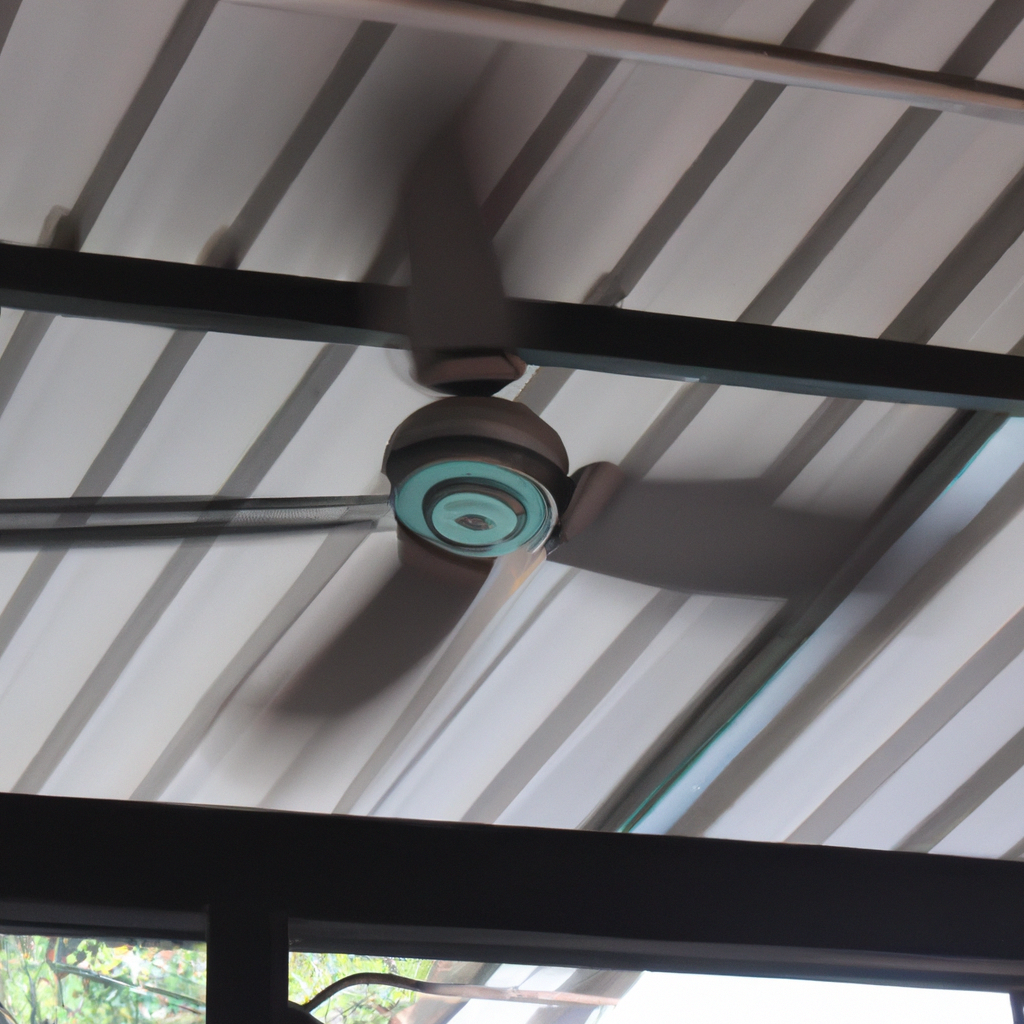Ceiling fans are a great way to keep air circulating in a room and maintain a comfortable temperature. But when it comes to choosing the right fan for your home, it can get confusing.
The main difference between indoor and outdoor ceiling fans is that outdoor ceiling fans are designed to withstand weather elements such as moisture, wind and dirt, while indoor fans are designed to be used in a protected environment. Additionally, outdoor fans typically include features such as weatherproof blades, sealed motors and corrosion-resistant finishes, which are not typically found on indoor models.
With so many different types of ceiling fans available, it is important to know the main differences between indoor and outdoor ceiling fans. This article will explore what distinguishes indoor and outdoor ceiling fans and how each type of fan can help improve airflow within your home.
The first difference between indoor and outdoor ceiling fans is the material that they are made from.
Indoor ceiling fans are typically manufactured from lighter materials such as plastic or metal, whereas outdoor fan blades are usually constructed from heavier, weather-resistant materials like steel or aluminum.
This ensures that outdoor ceiling fans can better withstand environmental elements such as wind, rain, snow and other extreme temperatures.
Another key factor to consider when selecting an indoor or outdoor fan is the size; indoor models tend to be smaller than their outdoor counterparts due to their limited space requirements.
Outdoor ceiling fans may also have additional features such as lights or remotes that allow you to adjust the speed of the fan while indoors, these features are often not necessary due to their close proximity.
Ultimately, understanding the differences between indoor and outdoor ceiling fans will help you make an informed decision when selecting one for your home.
Overview Of Ceiling Fans
The practical use of ceiling fans to cool a space has been around since the 1800s, but the theory that they can improve air circulation dates back much further. The first recorded reference to this concept is in a 1st century document written by Chinese philosopher and engineer, Lu Ban.
It is thought that he developed an early version of a rotating fan that helped to reduce humidity and improve air flow in homes.

Ceiling fans have evolved over time, with advances in technology allowing for greater efficiency, better airflow control and more tasteful design options.
Ceiling fans are now commonly used not only to cool a space but also to add a decorative element to the interior or exterior of any home.
Variations in design range from classic models with wooden blades to modern designs with sleek metallic finishes.
Variations In Design
Ceiling fans come in a variety of designs.
Indoor and outdoor ceiling fans have distinct differences which should be considered before making a purchase.
1. Outdoor ceiling fans are typically built with more durable materials to withstand the elements, such as dampers, rain, and sunlight.
2. The average indoor fan is designed to remain stationary and often has a shorter blade span than an outdoor fan.
3. Outdoor ceiling fans usually feature multiple speeds, while indoor models tend to offer fewer speed options.
4. Furthermore, outdoor ceiling fans come with wet-rated or damp-rated motors, allowing them to be exposed directly to moisture without risking damage or failure.
The design variations between indoor and outdoor ceiling fans should be considered prior to making a purchase decision based on usage requirements and desired features.
In regards to usage considerations, it is important to research the specific environment where the fan will be placed and make sure it is suited for that purpose.
Usage Considerations
The usage of indoor and outdoor ceiling fans differs significantly. While both are primarily used to circulate air, indoor fans are generally installed in rooms where people gather to provide a comfortable environment, while outdoor fans are used in covered patios and porches to move air and keep insects away.
In general, indoor ceiling fans should be placed at least seven feet from the ground as they can cause injury to people who walk underneath them. Outdoor fan blades should be kept out of direct rain and moisture by being placed under an overhang or other protective covering.
Additionally, outdoor models must be designed for wet or damp conditions with specific materials such as galvanized steel or aluminum that resist corrosion. This ensures long-term durability and performance.
The next section will discuss the differences in performance between indoor and outdoor ceiling fans.
Differences In Performance
It is essential to consider the differences between indoor and outdoor ceiling fans when deciding which type of fan to purchase.
Indoor ceiling fans are generally designed for use in air conditioned spaces, while outdoor ceiling fans are made to function in more extreme conditions.
Indoor ceiling fans tend to be smaller and lighter than their outdoor counterparts, making them suitable for installation in smaller spaces.
The main difference between indoor and outdoor ceiling fans lies in their durability and materials used. Outdoor ceiling fans are built with weather-resistant materials such as stainless steel, aluminum, and plastic that can withstand the elements.
These fan blades are also larger than those found on indoor fans, allowing them to move more air around outside spaces. On the other hand, indoor ceiling fans feature more decorative blades crafted from wood or cloth, which are not built for long-term exposure to the elements.
Additionally, most manufacturers offer a wider selection of indoor ceiling fan designs compared to outdoor models.
Conclusion
Ceiling fans are a popular choice for cooling a home, and they come in many different varieties. Although both indoor and outdoor ceiling fans vary in design, there are important differences that should be considered before making a purchase.
Indoor fans typically have larger blades with lower RPMs than outdoor fans, meaning they move air slower but more quietly. Outdoor fans, on the other hand, have smaller blades with higher RPMs to provide better airflow while still being able to withstand the elements.
Usage considerations should also be taken into account when deciding between an indoor and outdoor fan. For example, if one wishes to cool down a large patio area, an outdoor fan may be the best option due to its strong air movement capabilities.
Choosing between an indoor or outdoor ceiling fan is not easy as there are several factors at play.
The most important thing to consider is what type of environment the fan will operate in and how it will be used.
As such, it is crucial for homeowners to take into consideration their specific needs before making a purchase decision.
To illustrate this point, consider the story of two friends who were shopping for ceiling fans: one wanted an indoor fan to circulate air in their living room while the other needed an outdoor fan for their covered porch.
In the end, they each chose a suitable model that met their individual needs; however, had they not done their research beforehand they could have ended up with an unsuitable product.
In conclusion, when determining whether to buy an indoor or outdoor ceiling fan it is essential to weigh up all relevant factors such as design variations and usage considerations before making a final decision.
While there is no single ‘right’ answer as personal circumstances can vary greatly from one household to another; taking time out to understand all the options available can help ensure that any purchased product meets individual requirements efficiently and effectively.




